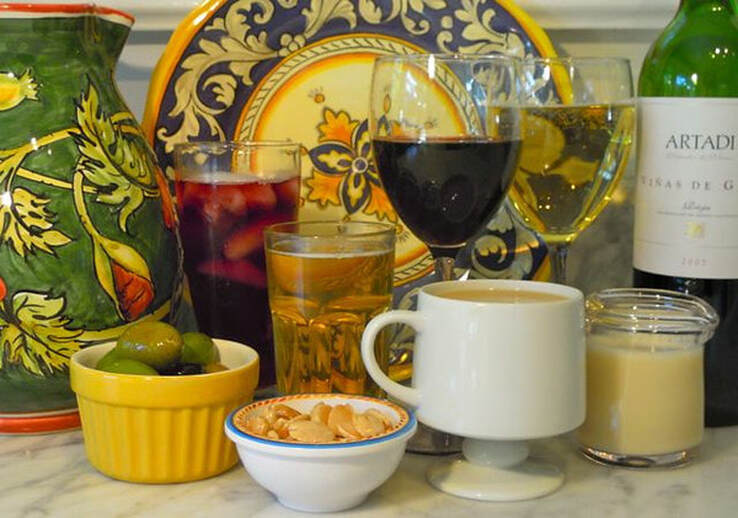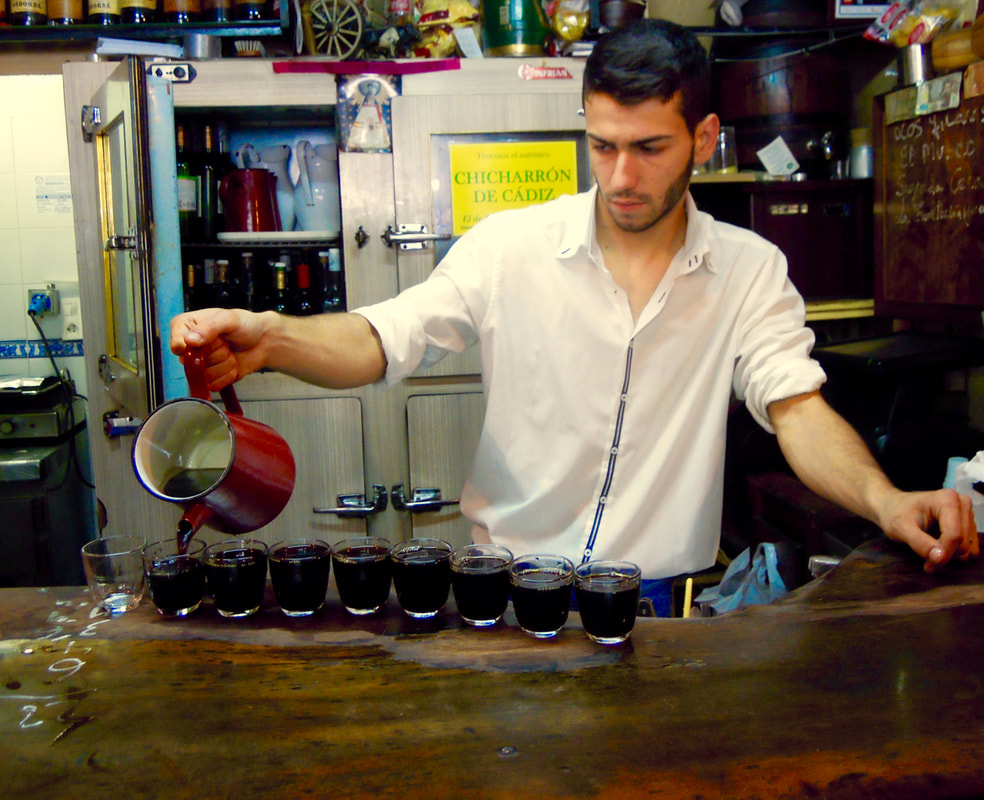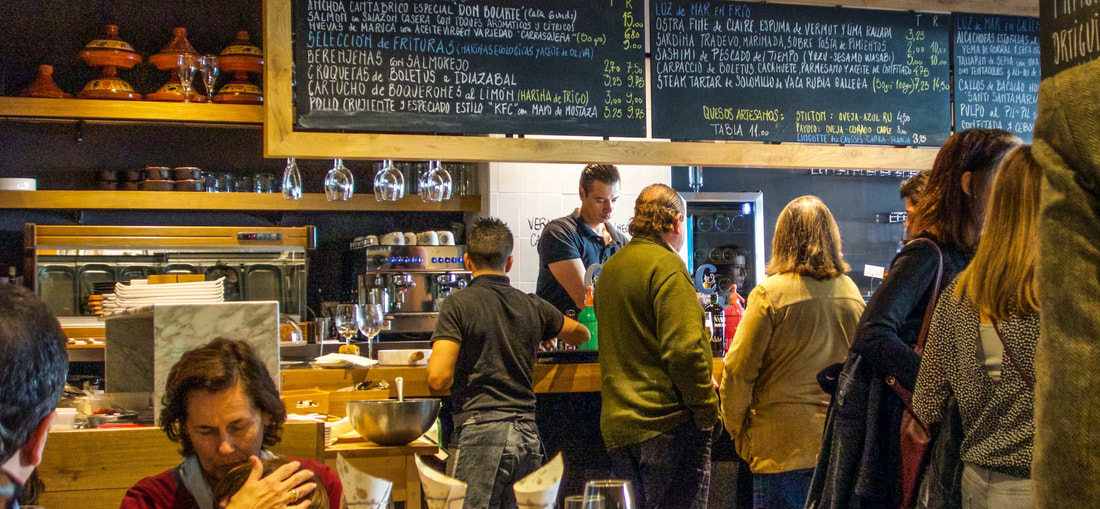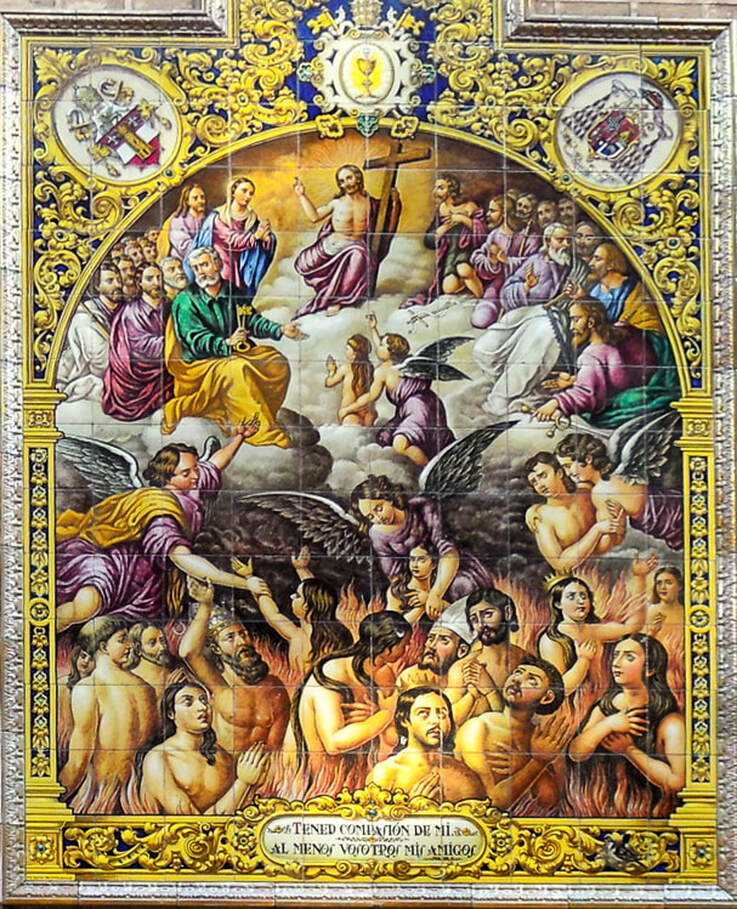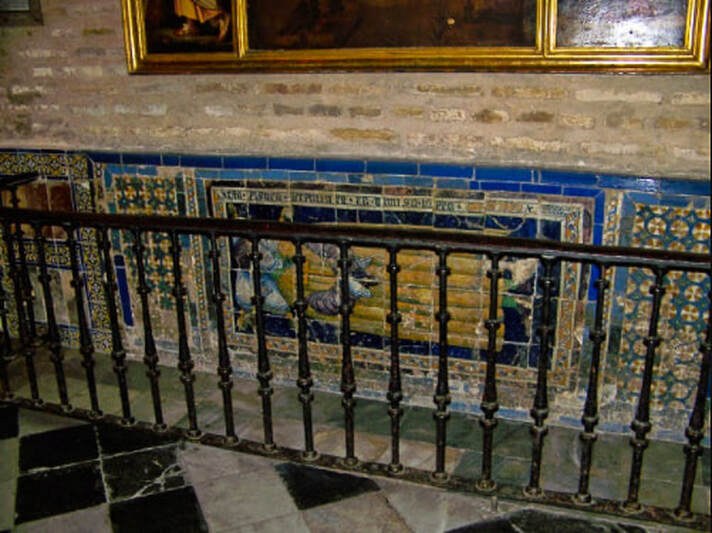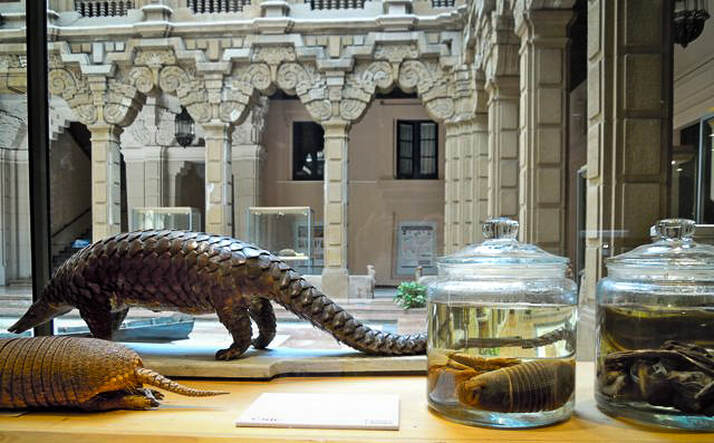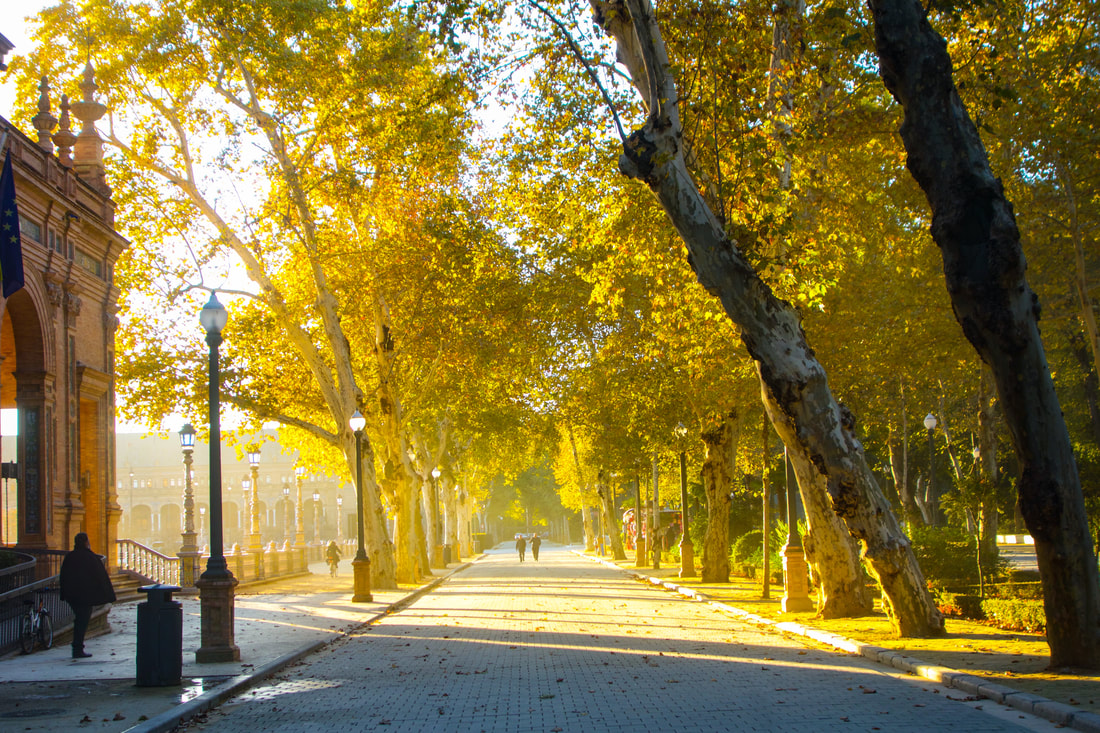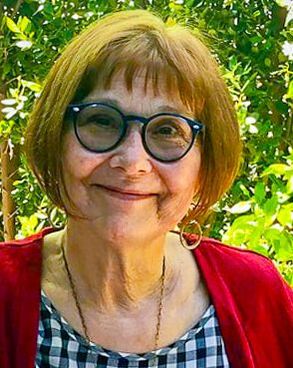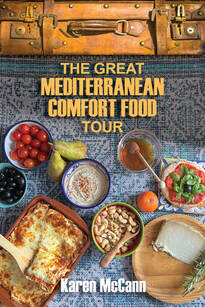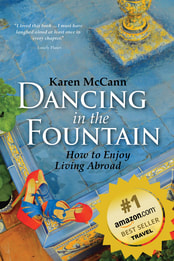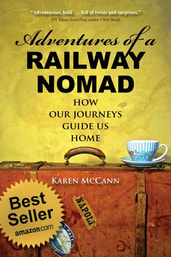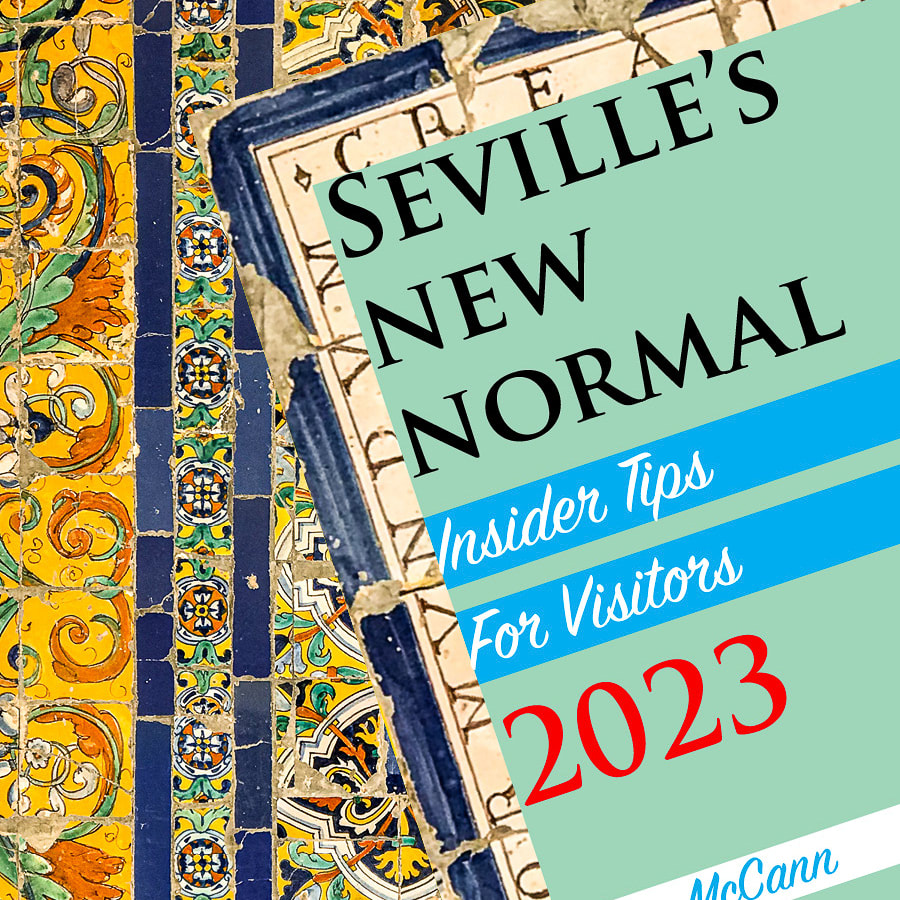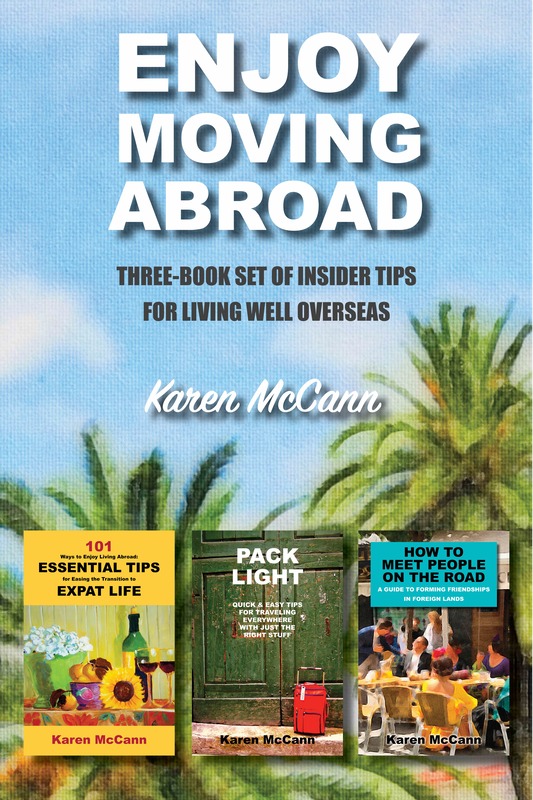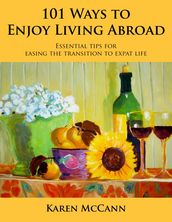|
“Oh my God, I can’t drink that!” a British friend exclaimed recently, peering aghast into a cup she’d just fetched from the bar. She’d made the rookie mistake of ordering with a literal translation: té con leche (tea with milk). When I first arrived in Seville in 2001, I learned the hard way that such a request will be greeted with stunned incomprehension as no one in the city (apart from a few mad foreigners) drinks tea that way. Attempting to give la loca (the madwoman) what she wants, the barkeep will stick a teabag in a cup of steamed milk, which — as my friend observed — is an undrinkable abomination. In my early days, as I mastered new vocabulary, I tried ordering té con leche aparte (tea with milk apart, or on the side). Invariably they would bring me a tea bag in hot water but no milk. Apparently by “apart,” they assume you mean in another room, on someone else’s table, or during a later course such as dessert. “You have to be very specific,” I told my friend. “Ask for té hecho con agua, con un poco de leche aparte para añadir.” (Tea made with water, with a little milk on the side to add in.) As she strode back to the bar repeating the phrase under her breath, I reflected on how valuable a visit to one of Seville's café-bars can be for expanding your Spanish vocabulary. Simply to order your morning coffee, you must navigate such options as café con leche (half espresso, half milk), café solo (a straight shot of espresso and quite an eye-opener), leche manchada (literally “stained milk,” a half inch of espresso in steamed milk), café americano (weak black coffee), descafeinado (instant decaf Nescafé), or descafeinado de máquina (freshly ground decaf espresso). Don’t bother memorizing the Spanish for 2% or skim; milk is nearly always full fat. A few places catering to foreigners have started offering alternatives, but you won’t get anywhere asking for leche de soya (soy milk). Everyone knows soy beans are not mammals and therefore do not produce milk; they will be dumbfounded at your ignorance. Ask for bebida de soya (soy drink) instead. While you’re sipping your morning té or café, you may notice an old man or two standing at the bar with a tiny glass of clear liquid. This is anís seco, very dry aniseed liqueur that tastes like paint thinner. A Spanish friend explained that when men must get up very early (and in Seville, this means anything before 10:00 am) for a job, they require something to reanimarse (reanimate themselves). Apparently drinking alcohol-based paint thinner does the trick. Wine purists will be horrified to learn that one of the most popular drinks in Spain is red wine over ice mixed with a fizzy soda much like 7Up, a concoction known as tinto de verano (summer red wine). Other regional favorites include the dense, sweet vino de naranja (orange wine) which involves adding orange rinds while making white wine, and sangría, which is offered by the copa or jarra (glass or pitcher) and generally includes a hefty dose of hard liquor, such as brandy or rum, as well as wine and fruit. Proceed with caution. Spaniards rarely get specific about brands or vintages of vino; you’ll never hear them discussing undercurrents of raspberries or smoked chocolate, or debating the rival merits of the 2014 vs. the 2016. They ask for vino tinto (red wine) or vino blanco (white wine), possibly specifying a region such as Rioja or Ribera del Duero. It’s hard to go wrong with Spanish reds, but whites are considerably trickier. Some taste like the ghastly cheap stuff served in American dive bars where you’re wiser to order the Budweiser. Spanish bartenders ask if you want wine that's dulce (sweet), or seco (dry); my efforts to obtain a full-bodied, buttery white with a long finish have been spectacularly unsuccessful. Now I ask for a Rueda verdejo (Roo-AY-dah vare-DAY-ho), as I’ve learned the verdejo grape has a pleasing richness and complexity. At the end of a long dinner, you’ll often be served complementary chupitos (tiny shot glasses) of some sort of liqueur such as Orujo, which aids the digestion and has an alcohol content somewhere above 50%. The idea is to send you out into the night with a smile on your lips, and it usually works. You can see why some folks need a little reanimating the morning after. Sevillanos say there are 3000 café-bars in the city, ranging from old-school to ultra-trendy. You will never have time to try them all, but at least with these handy phrases, you’ll have some idea of how to reply when the bartender asks, “Qué le pongo?” (What’s yours?) Have you tried ordering drinks in a Spanish café-bar? I'd love to hear about your experiences in the comments below. 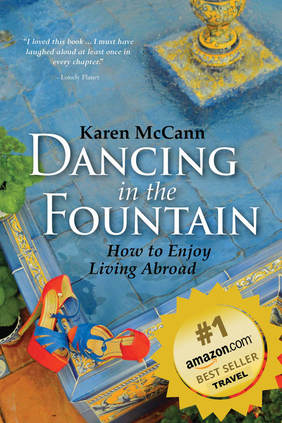 WANT THE INSIDE STORY ABOUT LIFE IN SEVILLE? When Rich, our dog, and I moved to Seville from Cleveland more than a dozen years ago, we had no idea what we were getting ourselves into. It's been quite a ride. For an insider's view of the city — with all its ancient traditions, lively street life, dive bars, and outlandish festivals — check out my bestselling memoir Dancing in the Fountain: How to Enjoy Living Abroad. "I loved this book," wrote Lonely Planet. "I must have laughed aloud at least once in every chapter ... The advice in the book is terrific."
7 Comments
It’s easy to become dazzled by Seville’s gorgeous architecture, passionate flamenco, great food, and vibrant street life. The city’s abundant charms and reasonable prices have made Seville the current darling of international travel, inspiring Rick Steves’ new video, The Independent’s “20 Photos that Show Why Seville Was Voted 2018’s Top Place to Visit” and, as I mentioned in my last post, the announcement that Seville is Lonely Planet's #1 Travel Destination of 2018. But to get acquainted with Sevilla profunda (deep Seville), you’ll need to explore the quirky, oddball places that don’t get mentioned in typical guidebooks. Want to have something special to write home about? Join me on a little visit to Seville’s weirder side. The Purgatory Tiles I’d passed by the tiles on the outside of San Pedro’s church dozens of times before a Spanish friend said, “Can you find the bird in this scene of Purgatory? The artist always used to put one in. If you find it, they say you’ll be married within the year.” This feature wasn’t particularly useful to me, as I’d been married for nearly two decades at the time, but I stopped and took a closer look. The thing that struck me most forcibly was the expressions on the faces of the naked people, who appeared to be, at most, mildly peeved about suffering the hideous torments of Purgatory, which according to traditional Church doctrine was where you went after death to atone for sins in hopes of gaining heaven. Found the bird yet? No? Click here. Íñigo Lopes’s Tomb If you didn’t find the bird on your own, not to worry. There’s another church where you can hedge your bets about matrimony: the magnificent old Santa Ana across the river in the Triana district. A tomb built into the wall is said to be the final resting place of a Puerto Rican prince. For reasons that have been lost in the dim mists of antiquity, it’s believed that if you touch this tomb with the toe of your shoe, you’ll be married within the year. Needless to say the wall has been battered to bits by centuries of hopefuls. Eventually the priests got tired of replacing the tile and put up an iron railing — but positioned it just close enough that if you really stretch, your shoe can connect solidly with the side of the tomb. 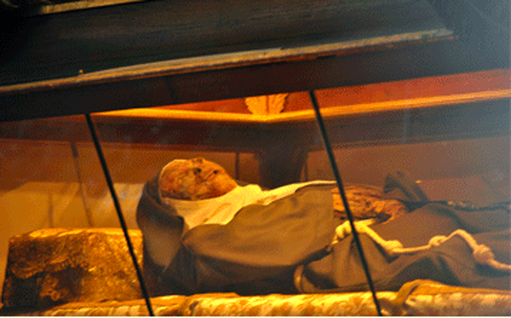 Doña Maria Coronel Doña Maria Coronel Three Miraculously Preserved Dead Bodies Like many ancient Catholic cities, Seville maintains the somewhat ghoulish practice of publicly displaying the mortal remains of well-known religious figures. The most recent addition is St. Angela of the Cross in the Instituto de las Hermanas de la Cruz (Sisters of the Company of the Cross). In her youth, she was deemed too sickly to be accepted into any established convent, so she started one of her own and ran it until 1932, when she died at the age of 86. There’s lots of speculation about what they did to preserve her body, because she appears plump, rosy, and bursting with health under the altar in her chapel. Another popular dead body is that of San Fernando of Castile, the king who was canonized for retaking Seville from the Moors in 1248. On his feast day, May 30, his corpse in its gold and crystal coffin is lifted out of the wall tomb and set up behind the altar of the Royal Chapel to preside over a mass celebrated in his honor. When the dignitaries depart at the end of the service, everyone else rushes forward for a closer look at his desiccated, blackened remains. On December 2 you can view the mummified corpse Doña Maria Coronel in the chapel of the convent she founded, Santa Inez (St. Agnes). As a girl, she was very beautiful and found herself relentlessly pursued by King Pedro the Cruel, a sort of fourteenth century Harvey Weinstein who wouldn’t take no for an answer. When Pedro finally cornered her in a kitchen (brace yourself, this part’s a ghastly shocker) she dashed a pan of boiling oil in her own face to make herself unattractive to her pursuer. She died in 1411 at the age of 77. Her remains are distinctly creepy. The Little Science Museum of Horrors Part mad scientist’s laboratory, part animal morgue, La Casa del Ciencia (House of Science) displays glass jars of bats and other beasts, a rare Iberian lynx with his eyes sewn shut, and various large birds laid on slabs with old-style mortuary toe tags tied to their feet with string. Housed in the dramatic 1929 Peruvian Pavilion in Parque Maria Louisa, it makes a pleasantly macabre side trip when visiting the Plaza de España. 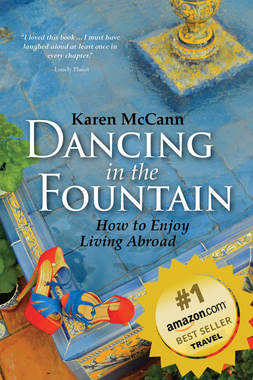 I've been exploring Seville since 2001, and it never ceases to amaze, bewitch, and entertain me. The city has more legends and lunacy than I could possibly have imagined and I'm always discovering new stories. Mainstream tourist guides are a great way to find the major points of interest, but Sevilla profunda has plenty of weird to share with those who choose to wander down its back alleyways. To Continue Your Offbeat Tour of Seville When Rich, our dog, and I moved to Seville from Cleveland more than a dozen years ago, we had no idea what we were getting ourselves into. It's been quite a ride. For an inside look at the city — its ancient traditions, off-the-wall legends, and ability to embrace life's mysteries — check out my memoir Dancing in the Fountain: How to Enjoy Living Abroad. "I loved this book," wrote Lonely Planet. "I must have laughed aloud at least once in every chapter ... The advice in the book is terrific." "A delightfully well-written true-life adventure story," says New York Times bestselling author Chris Brady. "McCann's writing is inviting, immediately charming, and constantly entertaining." The news that Lonely Planet designated Seville as the #1 Travel Destination of 2018 sent shockwaves through the expat community here. On the one hand, it justifies what we’ve been telling skeptical family and friends for years: this is one of the most delightful places in the world. On the other hand, we’re just a teeny bit panicked at the idea that yet more visitors will be heading our way. When Rich and I first moved here more than a dozen years ago, Seville was a sleepy touristic backwater, one of those also-ran places that got scratched off everyone’s destinations-to-consider list in favor of fashionable spots like Maui and Morocco. Today our city gets 11 million visitors a year. And while we’re delighted that the flagging economy is getting a much-needed shot in the arm, we’re a bit aghast at the massive tour groups clogging sidewalks, overrunning restaurants, and driving up prices. And it’s about to get much, much worse thanks to Lonely Planet. So my advice to you is this: If Seville is on your vacation-there-someday checklist, visit in January, February, or early March. When we first discovered Seville, Rich and I came here every February to escape the snow belt of Cleveland, a city that gets just 69 days of full sun a year, not one of which occurs between New Year’s and Easter. While our neighbors were busy shoveling a path to the car and scraping ice off their windshields, we were sitting at sunny sidewalk tables sipping espresso and watching the world stroll by. One of the beauties of Seville’s climate is that the mild winters — a trifle too cool for serious sunbathing, entirely too warm to produce any snow for sports — offer the kind of unremarkable weather that doesn’t demand excessive activity from anyone. Like any city, Seville has seen many changes in the last dozen years, but it hasn’t lost its two-thousand-year-old capacity for charming the socks off people. (Yes, I know, technically people didn’t wear socks 2000 years ago. But somehow "charming the togas" off people didn’t sound quite right either.) The city continues to enchant visitors with its magnificent Moorish palaces and gardens, vibrant street life, and pitchers of sangria for less than you’d pay for a glass of chardonnay back home. Arriving in winter or early spring, you’ll avoid the teeming hordes and inflated prices of the high season, which peaks during Semana Santa (Holy Week, March 25 to April 1 in 2018) and the Feria de Abril (April Fair, held this year April 15 to 22). You won’t find the frenzied atmosphere of vacation hotspots devoted to winter sports or spring break at the beach. And you’ll be just in time to enjoy the exploding new foodie scene that has transformed local dining into a world-class pleasure. Best of all, you’ll find the city breathing a collective sigh of relief and settling down to enjoy itself in the just-us atmosphere that prevails between the bustling holiday season and the spring festivals. Sidewalk cafés are still packed, but instead of tourists, you’ll find crowds of Sevillanos doing what they do best: enjoying themselves. People in this city devote the same energy and attention to their social lives that Americans expend on their careers. Finding time for family and friends isn’t pushed into the margins of life, it’s a top priority every single day. It’s downright inspiring. When we first arrived in Seville and were living in a cramped tourist apartment near the cathedral, Rich and I used to lie in bed at night listening to the hum of voices rising from the café-bars that lined our street. At first I desperately wished that everyone would go home and let me sleep in peace. But I gradually got used to it, then began to find it deeply soothing, a kind of cheery white noise that reminded me that for tonight, at least, all was well with the world outside my doorstep. And that, perhaps, is the best thing that Seville can offer us. Having weathered thousands of years of astounding triumphs and crushing defeats, the city has learned to focus on what truly matters: spending time with the people we love, enjoying small pleasures, and doing our bit to add to the joyful noise of the world. Want to Know More About Seville? 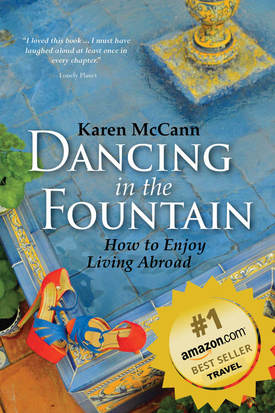 This is the story of how Rich and I fell in love with Seville, began exploring its quirkier byways, and keep re-discovering its charms. "I loved this book," Lonely Planet wrote about Dancing in the Fountain. "I must have laughed aloud at least once in every chapter ... The advice in the book is terrific." "A delightfully well-written true-life adventure story," says New York Times bestselling author Chris Brady. "McCann's writing is inviting, immediately charming, and constantly entertaining." Dancing in the Fountain takes its title from one very hot night when Rich and I were sitting on the edge of a big stone fountain near our Seville apartment. Dabbling our feet in the cool water, pretty soon we were wading, then waltzing in the fountain. An old Spaniard passing by growled, "Hey you two, is that any way to behave? You wouldn't do that back where you come from." And that's the whole point. Traveling and living overseas, you get to try things you'd never do in the old country. |
This blog is a promotion-free zone.
As my regular readers know, I never get free or discounted goods or services for mentioning anything on this blog (or anywhere else). I only write about things I find interesting and/or useful. I'm an American travel writer living in California and Seville, Spain. I travel the world seeking eccentric people, quirky places, and outrageously delicious food so I can have the fun of writing about them here.
My current project is OUT TO LUNCH IN SAN FRANCISCO. Don't miss out! SIGN UP HERE to be notified when I publish new posts. Planning a trip?
Use the search box below to find out about other places I've written about. Winner of the 2023 Firebird Book Award for Travel
#1 Amazon Bestseller in Tourist Destinations, Travel Tips, Gastronomy Essays, and Senior Travel
BLOG ARCHIVES
July 2024
CATEGORIES
All
|

